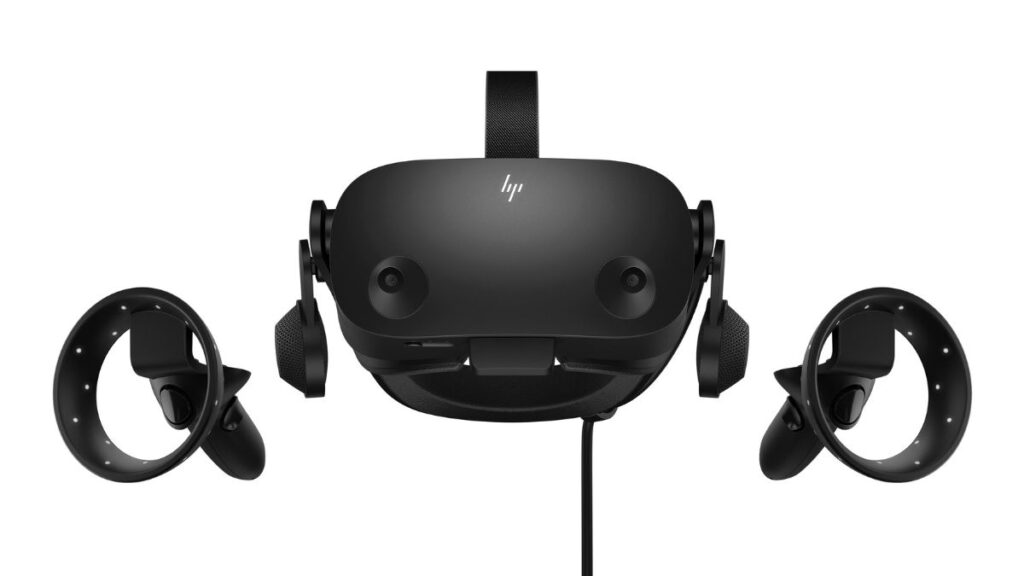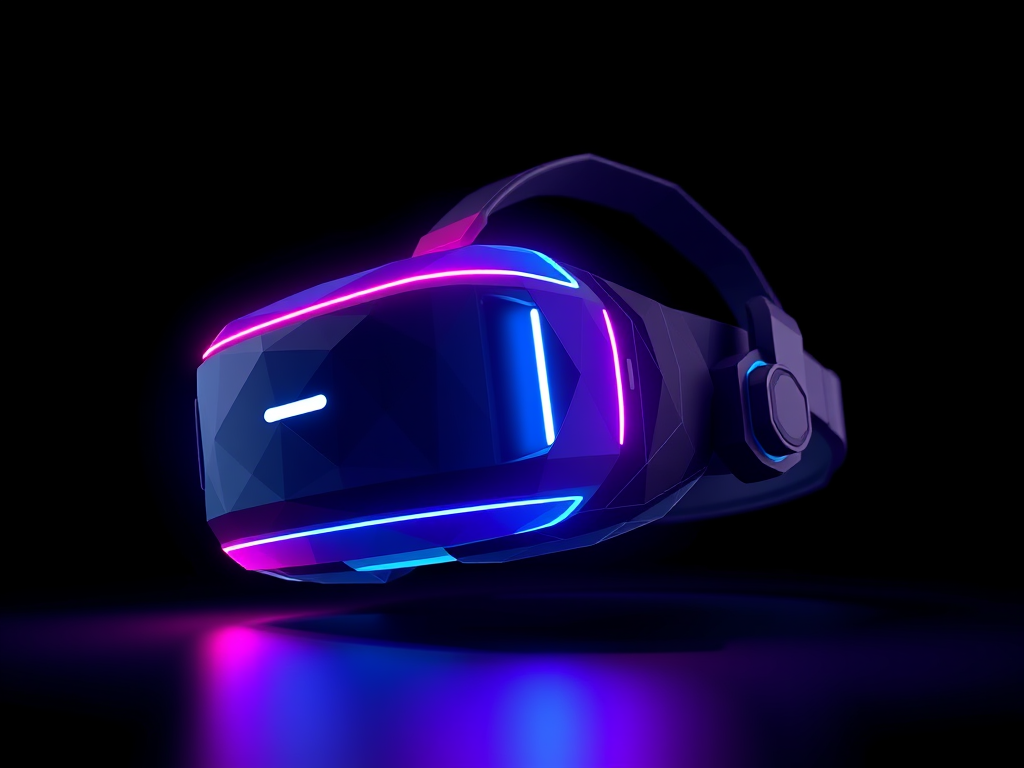The Best VR and Mixed Reality Headsets in 2025: A Full Breakdown
Virtual and mixed reality have come a long way since the early days of clunky headsets and pixelated graphics. In 2025, the VR and MR landscape is more exciting than ever, with headsets catering to everyone from casual users to hardcore enthusiasts. Whether you’re diving into immersive gaming, exploring creative applications, or blending the virtual and real worlds, there’s a headset out there for you.
Disclosure: This post contains affiliate links. As an Amazon Associate, I earn from qualifying purchases.
Let’s break down the top contenders available this year, highlighting their specs, strengths, and what makes each one stand out.
Meta Quest 3: The Versatile Powerhouse

The Meta Quest 3 continues to dominate the VR space, building on the success of its predecessors. It’s the ultimate all-rounder, offering a fantastic standalone experience while also supporting wireless PC VR.
- Display: Dual LCD panels
- Resolution: 2064 x 2208 per eye
- Refresh Rate: Up to 120Hz
- Field of View: ~100 degrees
- Tracking: Inside-out 6DoF tracking
- Controllers: Updated Oculus Touch controllers
- Notable Features: Standalone functionality, wireless PC VR support, improved comfort, and color passthrough.
Meta has solidified its place in the VR space with the Quest series, offering a balance of affordability and power that appeals to a wide range of users. The Quest 3 improves on the Quest 2’s solid foundation by offering better performance, improved visuals, and an overall smoother experience. Meta’s commitment to making VR accessible to all is evident, and their consistent updates to the software ecosystem keep this headset fresh and competitive.
Meta Quest 3S: A More Affordable Option

Not everyone needs all the bells and whistles, and that’s where the Quest 3S comes in. It’s a streamlined version of the Quest 3, offering the same core experience at a more budget-friendly price.
- Display: Dual LCD panels
- Resolution: 2064 x 2208 per eye
- Refresh Rate: Up to 120Hz
- Field of View: ~100 degrees
- Tracking: Inside-out 6DoF tracking
- Controllers: Redesigned controllers with better hand-tracking support
- Notable Features: Faster performance, enhanced comfort, and a lower price tag.
As Meta’s entry-level option, the Quest 3S offers excellent value. By trimming some of the advanced features while maintaining the Quest’s core strengths, it provides an accessible introduction to VR without sacrificing quality. The Quest 3S might lack some high-end features, but Meta’s ability to lower the price without cutting corners means it remains a solid contender in the mid-range VR market.
Where to Buy:
PlayStation VR2: Built for PlayStation Gamers

Sony’s PlayStation VR2 is a dream come true for PS5 owners. It’s designed specifically for gamers who want a premium, immersive experience with access to PlayStation-exclusive titles.
- Display: OLED
- Resolution: 2000 x 2040 per eye
- Refresh Rate: 90Hz, 120Hz
- Field of View: ~110 degrees
- Tracking: Inside-out 6DoF tracking
- Controllers: Sense controllers with haptic feedback and adaptive triggers
- Notable Features: Access to PlayStation-exclusive games, stunning visuals, immersive audio, and eye tracking.
Sony’s PS VR2 has redefined console VR gaming with its advanced features and seamless integration into the PlayStation ecosystem. With access to exclusive titles like Horizon Call of the Mountain, the PS VR2 not only offers fantastic visuals and haptic feedback, but also leverages the power of the PS5 to push boundaries in VR. It’s clear that Sony is invested in making their VR experience feel as premium as the rest of their console offerings.
Where to Buy:
HTC Vive XR Elite: The High-End Contender
HTC has been a leader in the VR space for years, and the Vive XR Elite is their latest premium offering. It’s packed with features that cater to enthusiasts and professionals alike.
- Display: LCD
- Resolution: 1920 x 1920 per eye
- Refresh Rate: Up to 120Hz
- Field of View: ~110 degrees
- Tracking: Inside-out 6DoF tracking
- Controllers: Vive controllers with precise tracking
- Notable Features: Eye tracking, full-color passthrough, and a modular design for added flexibility.
HTC’s Vive series has long been a favorite among VR professionals, and the XR Elite only strengthens this reputation. Known for its exceptional tracking capabilities, modular design, and eye-tracking technology, the Vive XR Elite caters to both high-end consumers and developers. HTC’s emphasis on customization and immersive features makes the XR Elite a standout in the premium VR space.
Where to Buy:
HP Reverb G2: High-Resolution PC VR

The HP Reverb G2 remains a favorite for PC VR enthusiasts who prioritize crystal-clear visuals. While it’s a wired headset, its high-resolution displays make it a standout choice.
- Display: LCD
- Resolution: 2160 x 2160 per eye
- Refresh Rate: 90Hz
- Field of View: ~114 degrees
- Tracking: Inside-out 6DoF tracking
- Controllers: Improved 6DoF controllers
- Notable Features: High-resolution screens, built-in spatial audio, and SteamVR compatibility.
HP’s Reverb G2 is a beloved choice for those who crave high fidelity, and its partnership with Valve and Microsoft ensures a high-quality experience. With a resolution that’s hard to beat, the Reverb G2 stands out in the world of PC VR headsets, offering not only a fantastic visual experience but also full compatibility with SteamVR. HP has delivered a headset that balances clarity with affordability, making it a top pick for simulation enthusiasts and professionals alike.
Where to Buy:
Pimax Crystal: The High-Resolution PCVR Beast
Pimax has always pushed the boundaries of VR, and the Crystal is no exception. It’s designed for enthusiasts who demand ultra-high resolution and a massive field of view.
- Display: QLED + Mini-LED
- Resolution: 2880 x 2880 per eye
- Refresh Rate: 90Hz, 120Hz
- Field of View: ~140 degrees
- Tracking: Inside-out (optional Lighthouse)
- Controllers: Pimax controllers
- Notable Features: Interchangeable lenses, eye-tracking, and wireless module support (though not fully wireless out of the box).
Pimax is known for its bold approach to VR, and the Crystal continues that tradition by offering an experience that caters to the hardcore enthusiast. With an ultra-wide FOV and a focus on resolution, Pimax targets VR users who want the best in visual fidelity and immersion. The Crystal is particularly well-suited for simulation fans, who will appreciate the precision and detail it brings to the table, whether they’re flying or racing.
Where to Buy:
Pimax Crystal Light: The Lightweight Performance Option
The Pimax Crystal Light offers a streamlined VR experience by eliminating certain features found in its counterparts, resulting in a lighter and more affordable headset.
- Display: QLED
- Resolution: 2880 x 2880 per eye
- Refresh Rate: Up to 120Hz
- Field of View: ~103 degrees
- Tracking: Inside-out; optional Lighthouse
- Controllers: Pimax controllers
- Notable Features: Lightweight design (approximately 310g lighter than standard models), manual IPD adjustment (58-72mm), vibrant colors with local dimming technology, and affordability.
By focusing on essential VR features and omitting standalone and eye-tracking functionalities, the Crystal Light provides a high-quality VR experience at a more accessible price point.
Pimax 12K QLED: Pushing the Limits
If the Crystal isn’t enough for you, the Pimax 12K QLED takes things to the next level. It’s a powerhouse designed for those who want the absolute best in VR.
- Display: QLED + Mini-LED
- Resolution: 6K per eye (5760 x 3240)
- Refresh Rate: Up to 200Hz
- Field of View: ~200 degrees
- Tracking: Lighthouse + Inside-out hybrid
- Controllers: Pimax VR controllers
- Notable Features: Massive FOV, eye-tracking, foveated rendering, and modular expandability.
Pimax continues to push the envelope with the 12K QLED, offering an astonishing visual experience with a resolution and FOV that are unmatched in the consumer market. The 12K QLED is designed for those who demand the absolute best, offering the highest clarity and immersive features like foveated rendering and eye-tracking. Pimax’s ability to combine these cutting-edge features with the freedom of modular expansion makes the 12K QLED a top-tier choice for VR aficionados.
Bigscreen Beyond 2: Lighter, Wider, Smarter
Building upon its predecessor, the Bigscreen Beyond 2 offers enhanced visuals, a wider field of view, and optional eye-tracking, all within an ultra-lightweight, custom-fitted design.
- Display: Dual Micro-OLED panels
- Resolution: 2560 x 2560 pixels per eye
- Refresh Rate: 75Hz (native), 90Hz (upscaled)
- Field of View: Approximately 108° horizontal × 96° vertical
- Tracking: SteamVR outside-in tracking (requires external base stations)
- Controllers: Compatible with SteamVR controllers (sold separately)
- Notable Features: Weighs just 107g (headset only), custom 3D-printed facial interface, adjustable IPD (48–75mm), upgraded pancake optics, optional eye-tracking available in the Beyond 2e variant, and compatibility with existing Beyond accessories.
Where to Buy:
Apple Vision Pro: The Ultra-Premium Experience
Apple’s entry into the mixed reality space is as sleek and innovative as you’d expect—but it comes with a hefty price tag. Apple Vision Pro is a premium mixed reality device, designed to integrate seamlessly with their ecosystem.
- Display: Micro-OLED
- Resolution: Ultra-high est.
- Refresh Rate: 90 Hz, 96 Hz, 100Hz
- Field of View: Approximately 100° horizontal × 73° vertical
- Tracking: Eye and hand tracking
- Controllers: None (eye and gesture-based)
- Notable Features: High-end design, seamless AR/VR blending, and Apple ecosystem integration.
Apple’s Vision Pro isn’t just another MR headset; it’s a statement of their vision for the future of mixed reality. With its emphasis on seamless integration into the Apple ecosystem, the Vision Pro offers an unparalleled AR/VR experience, showcasing Apple’s signature design excellence and commitment to user-friendly technology. The headset’s steep price may put it out of reach for most, but for those who can afford it, the Vision Pro is a game-changer, setting a new bar for what’s possible in mixed reality.
Comparison Table
| Headset | Resolution | Refresh Rate | FOV | Link |
|---|---|---|---|---|
| Meta Quest 3 | 2064 x 2208 per eye | Up to 120Hz | ~100° | Amazon |
| Meta Quest 3S | 2064 x 2208 per eye | Up to 120Hz | ~100° | Amazon |
| PlayStation VR2 | 2000 x 2040 per eye | 90Hz, 120Hz | ~110° | Amazon |
| HTC Vive XR Elite | 1920 x 1920 per eye | Up to 120Hz | ~110° | Amazon Vive.com |
| HP Reverb G2 | 2160 x 2160 per eye | 90Hz | ~114° | Amazon |
| Pimax Crystal | 2880 x 2880 per eye | 90Hz, 120Hz | ~140° | Pimax.com |
| Pimax Crystal Light | 2880 x 2880 per eye | Up to 120Hz | ~103° | Pimax.com |
| Bigscreen Beyond 2 | 2560 x 2560 pixels per eye | 75Hz, 90Hz | ~108 | Bigscreen.com |
| Apple Vision Pro | Estimated Ultra-HD | 90Hz, 96Hz, 100Hz | ~100° | Apple.com |
Final Thoughts
The VR and MR landscape in 2025 is more diverse and exciting than ever. Whether you’re a casual user, a hardcore gamer, or a tech enthusiast, there’s a headset that fits your needs and budget.
- Affordable and versatile: Meta Quest 3 or Quest 3S
- PlayStation gamer: PS VR2
- High-end performance: HTC Vive XR Elite
- Crystal-clear visuals: HP Reverb G2
- Ultra-wide FOV and resolution: Pimax Crystal or 12K QLED
- Lightweight and custom-fit: Bigscreen Beyond or Beyond 2
- Cutting-edge mixed reality: Apple Vision Pro
Which headset are you most excited about? Let us know in the comments!

Leave a Reply